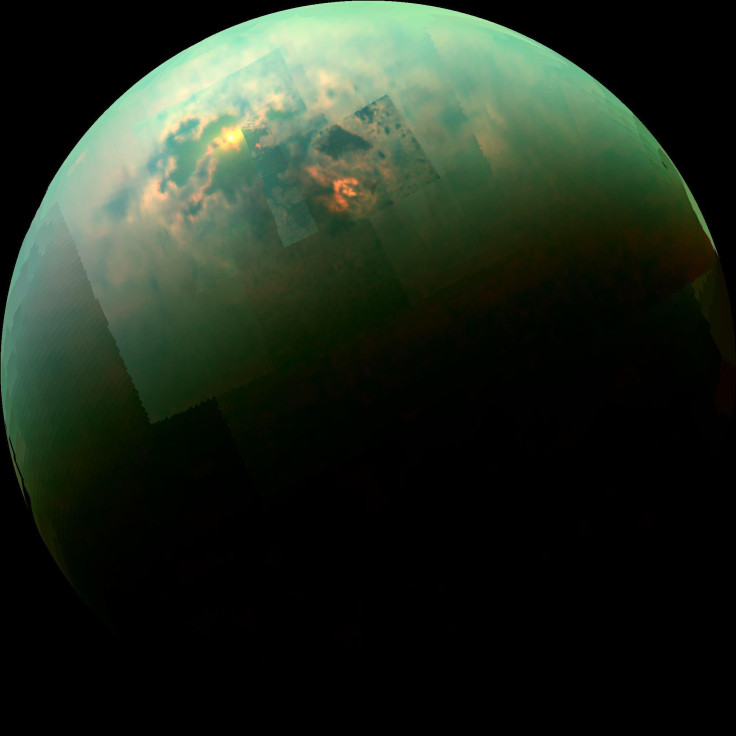Titan’s Methane Ocean Recreated In Lab To Test Future NASA Submarine

Saturn’s moon Titan is only second in size to Jupiter’s Ganymede, in the list of the largest moons in the solar system, but it is the largest body after Earth that has stable liquid surface oceans. The liquid in question is not water, however; it is methane, and NASA plans to send an autonomous submarine to study it, sometime in the next 20 years.
To further the study of Titan, which NASA has been analyzing using data collected by the Cassini mission, scientists at Washington State University recreated a methane ocean in a laboratory. To be exact, the WSU researchers built a test chamber filled with a “liquid mixture at very cold temperatures to simulate the seas of Titan. They added a two-inch, cylinder-shaped cartridge heater that would approximate the heat that a submarine would create.”
The research team was led by Ian Richardson, a former WSU graduate student who interned at NASA. During the internship, which was on an unrelated subject, he was asked by a NASA scientist about the problem of designing a submarine for Titan.
“My research just took a right turn, and I went with it. It’s a crazy experiment, and I never thought I would have had this opportunity. It’s been a very fun and challenging experimental design problem,” Richardson said in a statement Wednesday.
Two of the biggest problems the researchers came across while designing the test chamber were the formation of bubbles and capturing videos at the temperature which was very far below freezing.
If the future submarine is powered by a heat-generating mechanism, it would form nitrogen bubbles in the very cold liquid seas of Titan, which are made up of methane-ethane at a temperature of almost 300 degrees Fahrenheit below zero. These bubbles would hinder navigation of the submarine, and also make it difficult for onboard instruments to take images and collect data.
Even in the absence of bubbles, taking images and videos of the surroundings would be a challenging task, given the extreme cold, as well as pressure that is comparable to being under 30 meters (100 feet) of water. Fortunately, the presence of a small amount of nitrogen lowers the overall freezing temperature of the liquid from about minus 297 degrees Fahrenheit to minus 324 degrees Fahrenheit.
“That’s a big deal. That means you don’t have to worry about icebergs,’’ Richardson said in the statement.
The researchers worked around the temperature and pressure problems, and came up with a device that allowed them to capture video footage from inside the test chamber filled with liquid and snow methane-ethane.
Their findings appeared online Saturday in the journal Fluid Phase Equilibria, in a paper titled “Experimental PρT-x measurements of liquid methane-ethane-nitrogen mixtures.” NASA Glenn Research Center was also involved in the study.
“These measurements are being used to aid in thermodynamic modeling of the Titan seas as well as the design of the Titan Submarine,” the paper said of its findings.
© Copyright IBTimes 2025. All rights reserved.



















